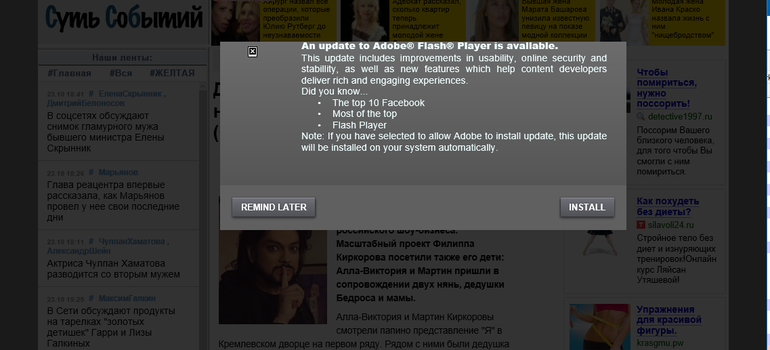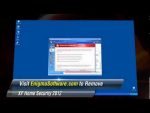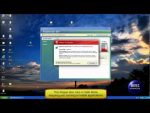There has been a serious debacle amongst computer users who have taken notice to a fake security program called Win 7 Anti-Virus 2012 installed on their PC. The major issue among them lies in the deception and scams that Win 7 Anti-Virus 2012 brings. Basically, Win 7 Anti-Virus 2012 has been classified to be a fake security program that makes a false claim of being able to rid a PC of spyware, viruses and other malware. The epic failure on Win 7 Anti-Virus 2012′s part to remove malware is a clear indication of its illegitimacy.
Win 7 Anti-Virus 2012 was created by cyber crooks that commonly create many fake security apps to ultimately take PC users for a ride. This ride is one that ends up slipping money out of their pocket by offering the Win 7 Anti-Virus 2012 program for a certain price in return for Win 7 Anti-Virus 2012’s failed ability to detect and remove malware from their PC. Win 7 Anti-Virus 2012 does not live up to its promises of removing malware as it says it will even if you purchase a so-called “registered” copy of Win 7 Anti-Virus 2012. Let it be known, despite its enticing looks and promised security functions, Win 7 Anti-Virus 2012 is an outright scam and primarily designed to swindle money from you.
How Can You Remove Win 7 Anti-Virus 2012?
Win 7 Anti-Virus 2012 can be very difficult to manually remove if you are an inexperienced computer user. Not to mention, Win 7 Anti-Virus 2012 has been known to populate the Windows Registry with many different entries and removing the wrong entries could render a PC damaged or useless. The use of a reputable antispyware or antivirus tool is recommended to safely remove Win 7 Anti-Virus 2012 from your Windows computer.
To easily remove Win 7 Anti-Virus 2012, find the following process and end them in the task manager. After that is done, delete each related Win 7 Anti-Virus 2012 file from your hard drive. In additional to locating the following processes, it is recommended that you delete the Win 7 Anti-Virus 2012 registry entries listed below as well. It is also a good idea to uninstall the Win 7 Anti-Virus 2012 application via your add/remove programs function found in the Windows Control Panel if your system recognizes Win 7 Anti-Virus 2012 has an installed program.
Win 7 Anti-Virus 2012 files (and folders) to remove:
- %AllUsersProfile%\[RANDOM CHARACTERS]
- %AppData%\Local\[RANDOM CHARACTERS]
- %AppData%\Local\[RANDOM CHARACTERS].exe
- %AppData%\Roaming\Microsoft\Windows\Templates\[RANDOM CHARACTERS]
- %Temp%\[RANDOM CHARACTERS]
Win 7 Anti-Virus 2012 registry entries to remove:
- HKEY_CURRENT_USER\Software\Classes\.exe “(Default)” = ‘exefile’
- HKEY_CURRENT_USER\Software\Classes\.exe “Content Type” = ‘application/x-msdownload’
- HKEY_CURRENT_USER\Software\Classes\.exe\DefaultIcon “(Default)” = ‘%1? = ‘”%UserProfile%\Local Settings\Application Data\[RANDOM CHARACTERS].exe” /START “%1? %*’
- HKEY_CURRENT_USER\Software\Classes\.exe\shell\open\command “IsolatedCommand” = ‘”%1? %*’
- HKEY_CURRENT_USER\Software\Classes\.exe\shell\runas\command “(Default)” = ‘”%1? %*’
- HKEY_CURRENT_USER\Software\Classes\.exe\shell\runas\command “IsolatedCommand” = ‘”%1? %*’
- HKEY_CURRENT_USER\Software\Classes\exefile “(Default)” = ‘Application’
- HKEY_CURRENT_USER\Software\Classes\exefile “Content Type” = ‘application/x-msdownload’
- HKEY_CURRENT_USER\Software\Classes\exefile\DefaultIcon “(Default)” = ‘%1?
- HKEY_CURRENT_USER\Software\Classes\exefile\shell\open\command “(Default)” = ‘”%UserProfile%\Local Settings\Application Data\[RANDOM CHARACTERS].exe” /START “%1? %*’
- HKEY_CURRENT_USER\Software\Classes\exefile\shell\open\command “IsolatedCommand” = ‘”%1? %*’
- HKEY_CURRENT_USER\Software\Classes\exefile\shell\runas\command “(Default)” = ‘”%1? %*’
- HKEY_CURRENT_USER\Software\Classes\exefile\shell\runas\command “IsolatedCommand” – ‘”%1? %*’
- HKEY_LOCAL_MACHINE\SOFTWARE\Clients\StartMenuInternet\FIREFOX.EXE\shell\open\command “(Default)” = ‘”%UserProfile%\Local Settings\Application Data\[RANDOM CHARACTERS].exe” /START “%Program Files%\Mozilla Firefox\firefox.exe”‘
- HKEY_LOCAL_MACHINE\SOFTWARE\Clients\StartMenuInternet\FIREFOX.EXE\shell\safemode\command “(Default)” = ‘”%UserProfile%\Local Settings\Application Data\[RANDOM CHARACTERS].exe” /START “%Program Files%\Mozilla Firefox\firefox.exe” -safe-mode’
- HKEY_LOCAL_MACHINE\SOFTWARE\Clients\StartMenuInternet\IEXPLORE.EXE\shell\open\command “(Default)” = ‘”%UserProfile%\Local Settings\Application Data\[RANDOM CHARACTERS].exe” /START “%Program Files%\Internet Explorer\iexplore.exe”‘
- HKEY..\..\..\..{RegistryKeys}
- HKEY_CLASSES_ROOT\.exe\shell\open\command “(Default)” = ‘”%UserProfile%\Local Settings\Application Data\[RANDOM CHARACTERS].exe” /START “%1? %*’
- HKEY_CLASSES_ROOT\exefile\shell\open\command “(Default)” = ‘”%UserProfile%\Local Settings\Application Data\[RANDOM CHARACTERS].exe” /START “%1? %*’





